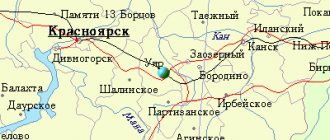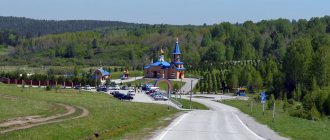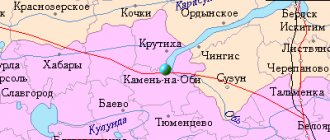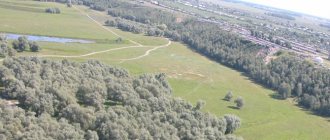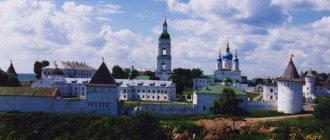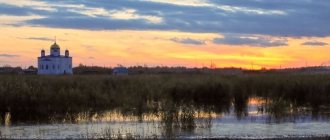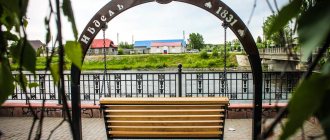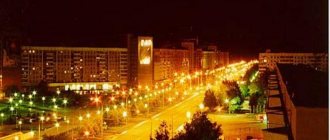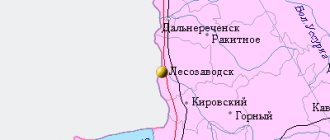This term has other meanings, see Shilka (meanings).
| City Flag | Coat of arms |
| A country | Russia, Russia |
| Subject of the federation | Zabaikalsky Krai Zabaikalsky Krai |
| Municipal district | Shilkinsky |
| urban settlement | "Shilkinskoe" |
| Coordinates | 51°51′00″ n. w. 116°02′00″ E. d. / 51.85000° n. w. 116.03333° E. d. / 51.85000; 116.03333 (G) [www.openstreetmap.org/?mlat=51.85000&mlon=116.03333&zoom=13 (O)] (Z)Coordinates: 51°51′00″ N. w. 116°02′00″ E. d. / 51.85000° n. w. 116.03333° E. d. / 51.85000; 116.03333 (G) [www.openstreetmap.org/?mlat=51.85000&mlon=116.03333&zoom=13 (O)] (I) |
| Internal division | Sotsgorod, Railway town, Agricultural Dorurs, Northern, Argun, Center, 7th district, Opytnaya |
| Chapter | Sivolap Sergey Nikolaevich |
| Based | 1st half of the 18th century |
| First mention | 1765 |
| Square | 105 km² |
| Center height | 490 |
| Population | ↘12,983[1] people (2016) |
| Density | 123.65 people/km² |
| Names of residents | Shilkintsy, Shilkinets |
| Timezone | UTC+9 |
| Telephone code | +7 30244 |
| Postcode | 673370 |
| Vehicle code | 75, 80 |
| OKATO code | [classif.spb.ru/classificators/view/okt.php?st=A&kr=1&kod=76254501002 76 254 501 002] |
| Moscow |
| Chita |
Audio, photo and video
on Wikimedia Commons
Shilka
- a city (since 1951) in Russia, the administrative center of the Shilkinsky district of the Trans-Baikal Territory.
Population - 12,983[1] people. (2016).
The city is located in the valley of the Shilka River (the left component of the Amur), 210 km from Chita along the Amur highway, 248 km along the Trans-Siberian Railway.
Shilka railway station on the Trans-Siberian Railway.
Content
- 1. History
- 2 Climate
- 3 Population
- 4 Education and science
- 5 Healthcare
- 6 Transport infrastructure
- 7 Media
- 8 Religion
- 9 People associated with the city
- 10 Cultural heritage sites
- 11 Archeology
- 12 Old and modern names of Shilki streets
- 13 Chapters of Shilka in different years
- 14 Interesting facts
- 15 Literature
- 16 Notes
- 17 Links
Story
The city owes its name to the Shilka River, known from the very beginning of the development of Transbaikalia by Russian explorers. The name “Silkar” in Evenki means a narrow valley, later in Russified form - Shilkar, and applied to the entire river from the source of the Onon River to the mouth of the Amur. The village of Shilka became famous in 1765 as the Cossack guard of Shilkinsky on the left bank of the river. The first to settle here were the Cossacks of the Mitrofanovskaya village of the Transbaikal Cossack Army, who were attracted by the fertile lands in the river valley.
In 1893, the Shilka post office opened the reception of internal telegrams. In 1894, a savings bank was opened at the post and telegraph office in Shilka.
In 1897, the river flooded the village of Mitrofanovskaya, destroying the locomotive depot under construction, the station and the pier where cargo arrived for the construction of the railway. Most of the Cossacks had to move to a higher place, to the village of Shilkinsky. A station with the main locomotive depot began to be built here. By the time the road was put into operation, the station had a main and three auxiliary tracks, two dead ends (now these are the tracks of the odd park). 2 depot buildings were built, three-line and single-line with hoods in both directions. Service and residential buildings were located in the area of modern Lenin and Stantsionnaya streets from the former railway club to the depot and in the northern part - along the current Sovetskaya, Kooperativnaya and Fizkulturnaya streets. According to the 1907 census, there were 922 people in the village, and according to the 1910 census there were 1,652 souls of both sexes, of which 560 souls were railway employees and workers, 408 souls were Cossacks, 684 souls were commoners. It was noted that at that time, the village was compactly built, with 145 buildings, of which: a 1-2-story house, the rest were one-story. There were also 2 water mills, a sausage shop, a billiard room, a tavern, and a card room. In 1910, a two-year school of the Ministry of Education was opened.
After the CER and the Kaidalovskaya branch were put into operation in 1903, the main direction of the Trans-Baikal Railway became the Verkhneudinsk - Chita - Manchuria route. The Karymskaya - Sretensk section has become a dead end, its development, including the Shilka station, has slowed down. The book “Review of the commercial activities of the Trans-Baikal Railway for 1912” provides data on the station. The useful length of the station tracks, except for the main one, is 2486.98 linear fathoms (the same as in 1900). Warehouses and weighing equipment: warehouses - with an area of 25.90 square fathoms, with a capacity of 8 cars, covered platforms - with an area of 26.98 square meters. fathom with a capacity of 9 wagons, scales - one wagon and two decimal. Station staff: station chief, two assistants, commercial clerk, weigher. The main cargoes: upon arrival - grain, timber; on departure - hay, grain cargo, coal. In the area of the station (15 - 80 versts) there are gold mines of private owners Starnovsky, Kazakov, Polutov and others. The population near the mines is up to 5 thousand people.
In Shilka before the Great October Revolution (according to A.P. Mashukov, 01/22/1972) there were no street names or numbers on the houses. After the revolution of 1917, the Village Council was formed.
At the end of 1913, through train traffic opened from Blagoveshchensk to St. Petersburg. The station became part of the Trans-Siberian Railway, and the volume of cargo transportation increased sharply. And yet, the settlement of Shilka and the development of adjacent territories progressed slowly. In the village, the territory of the current Peace Square and Sotsgorod was used for haymaking, and there was still a swampy lake area. By 1923, its population was only 2,193 people. Before the formation of the Shilkinsky district, Shilka was the center of the Shilkinsky volost, which included 21 village councils.
The development of Shilka began in the second half of the 1920s and, especially, in the 1930s. Several factors contributed to this. Firstly, in 1926, an administrative reform was carried out in the country, district and district divisions were introduced, Shilka became the center of a region formed from the Shilkinskaya and Razmakhninskaya volosts, and on January 9, 1929 it received the status of a workers’ village. Secondly, emerging from devastation, the young Soviet country was forced to buy various materials and equipment from foreign countries. Gold was required. The gold mines of Baleya and Darasun began to develop. For the latter, Shilka became a transit point. Fuel, technical materials, equipment, and food were supplied to the growing mine and then the plant. Ore and concentrate were removed from the mine. An important factor in the subsequent development of the station was the construction of second tracks, which was carried out from 1932 to 1938.
On December 5, 1933, a government decree was issued to strengthen the throughput and carrying capacity of the Trans-Baikal and Ussuri railways and staff the roads with engineering, technical and labor personnel. On the roads, it was planned to organize a network of technical railway schools with a three-year training period and factory schools. The NKPS FZU was created in Shilka; in 1934, 175 people were admitted to it, 134 people graduated. There was also a second training school here - mining apprenticeship.
The population of the village grew rapidly. If according to the 1926 census there were 3,663 people living in Shilka, then on January 1, 1931 - 5,818 people, on January 1, 1935 - 8,600 people. It was during these years that several locomotive depot buildings, a turntable and an overpass, an even station park, water supply from the Shilka River (before that there was a small water pumping station from the Kiya River), a station, a hospital, a school, a power plant, and a large residential area called Sotsgorod were built at the station. .
In 1932, the Shilkinskaya signaling and communication distance was organized within the boundaries of the Chinese crossing (Tarskaya) - Pashennaya station (Chernyshevsk), including branches to Nerchinsk, Sretensk, Bukachach. In the same year, the state farm DorURS was created, the first director of which was the locomotive depot driver D. A. Mogirev. In 1935, a carriage section was organized, the head of which was F.A. Monakhov. In 1936, the Shilka operational department was organized within the boundaries of Karymskaya - Ukurei. In 1939, a power plant with a capacity of 996 kW, built by AmurLAG, was put into operation. R. M. Brumer was appointed its first boss. In April 1936, a railway station was built.
By the end of the 1930s, Shilka became a powerful station with extensive track development and a full range of railway enterprises. The fact that its importance in the life of the railway has grown is evidenced by the fact that in March 1939, Anton Kolbin, a blacksmith of the Shilkinsky locomotive depot, was elected as a delegate to the XVIII Party Congress from the Transbaikal railway workers. The first builders came to Shilka in 1942, when SMP-177 was formed. Houses were built mainly for railway workers. In 1949, construction of two-story houses began on Lenin Street, a railway town. In 1947, a confectionery factory was opened.
In the post-war years, radical transformations took place in Shilka, railway transport and energy enterprises received new development, the volume of housing construction grew, and the population grew accordingly. In 1951, by decree of the Presidium of the Supreme Soviet of the RSFSR dated May 16, 1951, the working settlement of Shilka received the status of a city of district significance. In 1952, the Lokomotiv stadium was built. The airport was opened in 1961.
The city reached its greatest prosperity and development in the 1960s and 1970s. Technological progress has transformed the city. New buildings appeared on his map: an industrial plant, a creamery, a bakery, and a reinforced concrete products plant. A microdistrict of five-story buildings and the Severny and Argun microdistricts appeared. In terms of improvement and sanitary condition, the city of Shilka was recognized as one of the best settlements, and in 1974 it was awarded the challenge red banner of the RSFSR and the All-Union Central Council of Trade Unions.
Shilka city: periskop
Well, we continue our odyssey, which stopped at Kholbon, then to the city of Shilki.
I recently showed you a monument on its central square, and now - a walk through the city itself. The men from the UAZ dropped us off on the eastern outskirts of Shilka, and we wandered along the tracks to the west. Soon the tracks multiplied, and we realized that we were approaching the station. Here we are a little closer to Moscow – 6444 km.
As for the Shilki station, this, in my opinion, is the second gloomiest station on the Trans-Siberian Railway - after Cheremkhovo. Some awkward parallelepipeds, placed chaotically next to each other, and painted gray and black.
From the station we walked deeper towards the town center, asking passers-by for directions. Finally, after some sawmills and warehouses, two-story Stalin buildings appeared.
In the center there was something like a park, and in the distance you could see an airplane.
Some Stalinkas were freshly painted, and a very nice color.
And here is the MiG-15, against the backdrop of the city and district Administration building.
A square with a monument to fallen soldiers.
Both the civil war in Transbaikalia and the Great Patriotic War are combined into one composition.
Fragment of the monument.
Against a checkered green background - a declaration of love.
Advertising. I was especially touched by the patriarchal “...with saving on a floppy disk.” But Shilka’s coat of arms is interesting.
Monument to the "Afghans".
I found it very impressive from an artistic point of view. Salang pass, cars going into the tunnel, a strict Soviet soldier with a Kalashnikov.
Local recreation center - like, railway workers.
And again, a typical house for railway workers during the construction of the Great Siberian Road (I have already shown them several times, remember Nerchinsk?).
Pre-revolutionary station building.
“Red Guards Tyumentsev G.P., Igishchev V.M. From fellow countrymen. 1918-1920".
Wooden Church of St. apostles Peter and Paul.
I went inside and it smelled of wood and melted wax. I immediately remembered the wooden temple in Karelian Kemi, but here it was brighter. They gave me this newspaper.
Another view of the temple, with reflection.
Then we climbed onto the viaduct above the marshalling yard to survey the surrounding area.
TEM2 with the inscription “Shilka”.
We walked back the other way, further from the railway, and didn’t take off again. We solved the issue of food by shopping at the store, and then time began to run out: soon our commuter was leaving for Karymskaya. We hurried and decided to eat right on the train. We did not visit the garrison microdistrict (pilots) - it was far away, limited to the immediate surroundings.
To be continued.
Transbaikalia.Chita: 1. Character and flavor, 2. Revealing the flavor further, 3. Stone architecture, 4. Wooden architecture, 5. Small Transbaikal Railway. Sketches: Chinese in the city, the station temple at sunset. Petrovsky Plant: Character and flavor, Ruins of a metallurgical plant, Wooden houses, Socialist Town and Metallurgists Park, Historical cemetery, Transbaikal cats. Sretensk and the way to it: Kuenga, Road along Shilka, Station and Dead end of the Trans-Baikal road, City of Sretensk, Wooden architecture of Sretensk. Nerchinsk and the path to Shilka: Trans-Baikal Versailles, Sketches from Nerchinsk, Village of Kholbon.
periskop.livejournal.com
Climate
- Average annual air temperature - −0.8 °C
- Relative air humidity - 61.9%
- Average wind speed - 3.4 m/s
| Climate of Shilka | |||||||||||||
| Index | Jan. | Feb. | March | Apr. | May | June | July | Aug. | Sep. | Oct. | Nov. | Dec. | Year |
| Average temperature, °C | −24,1 | −18,9 | −9,1 | 1,9 | 10,5 | 16,9 | 19,2 | 16,8 | 9,5 | 0,5 | −12,3 | −21,7 | −0,8 |
| Source: [www.retscreen.net/ru/home.php NASA. RETScreen Database] | |||||||||||||
People associated with the city
- Badanin Vasily Ivanovich (1920-1994) - hero of the Soviet Union.
- Borodin Nikolai Vasilievich (1918-1946) - hero of the Soviet Union.
- Glazov Nikolai Elizarovich (1919-1943) - hero of the Soviet Union.
- Puzyrev Fedor Mikhailovich (1920-2003) - participant in the Great Patriotic War, Hero of the Soviet Union. Honorary citizen of the Chita region. Honorary citizen of the city of Shilki.
- Rozhnova Polina Konstantinovna - writer.
- Sobolev Afanasy Petrovich (1919-1958) - Hero of the Soviet Union.
- Vishnyakov Mikhail Evseevich - poet, writer.
- Balyabin Frol Emelyanovich - Commander of the Argun and Daursky regiment. He arrived in Shilka in 1919, organizing a gathering to gather for the Daurian front. A street was named after him in the 1930s.
- Klokov Petr Yakovlevich (1924-1989) -Hero of the Soviet Union. Major of the Soviet army.
Shilka
(Transbaikal region)
OKATO code:
76254501
Founded:
1st half.
18th century Urban-type settlement since:
1929
City since:
1951 City of district subordination (Shilkinsky district of the Trans-Baikal Territory)
Center:
Shilkinsky district
Telephone code (reference phone)
| 30244***** | — |
Deviation from Moscow time, hours:
6
Geographic latitude:
51°51′
Geographic longitude:
116°02′
Altitude above sea level, meters:
490 Sunrise and sunset times in the city of Shilka
Old and modern names of Shilki streets
| Year of renaming | year of renaming | Modern name |
| Soviet | 1995 | Badanina |
| Cooperative | 1965 | Borodin |
| Physical education | unknown | Borodin |
| Trade Union | early 60's | Lenin |
| Lugovaya | 1975 | Soboleva |
| 1st Peasant | 1967 | Glazova |
| Eastern | 1983 | School |
| Shilkinskaya | 2006 | Puzyreva |
| Nagornaya (most of the street) | 1951 | Komsomolskaya |
Notes
- ↑ 123
www.gks.ru/free_doc/doc_2016/bul_dr/mun_obr2016.rar Population of the Russian Federation by municipalities as of January 1, 2016 - [demoscope.ru/weekly/ssp/rus59_reg2.php All-Union Population Census of 1959. The size of the urban population of the RSFSR, its territorial units, urban settlements and urban areas by gender] (Russian). Demoscope Weekly. Retrieved September 25, 2013. [www.webcitation.org/6GDOghWC9 Archived from the original on April 28, 2013].
- ↑ 1234567891011
[www.mojgorod.ru/chitinsk_obl/shilka/ People's encyclopedia of cities and regions of Russia. Shilka]. Retrieved October 7, 2013. [www.webcitation.org/6KCGyJEjM Archived from the original on October 7, 2013]. - [demoscope.ru/weekly/ssp/rus70_reg2.php All-Union Population Census of 1970 The size of the urban population of the RSFSR, its territorial units, urban settlements and urban areas by gender.] (Russian). Demoscope Weekly. Retrieved September 25, 2013. [www.webcitation.org/6GDOiMstp Archived from the original on April 28, 2013].
- [demoscope.ru/weekly/ssp/rus79_reg2.php All-Union Population Census of 1979 The size of the urban population of the RSFSR, its territorial units, urban settlements and urban areas by gender.] (Russian). Demoscope Weekly. Retrieved September 25, 2013. [www.webcitation.org/6GDOjhZ5L Archived from the original on April 28, 2013].
- [demoscope.ru/weekly/ssp/rus89_reg2.php All-Union Population Census of 1989. Urban population]. [www.webcitation.org/617x0o0Pa Archived from the original on August 22, 2011].
- [www.perepis2002.ru/ct/doc/1_TOM_01_04.xls All-Russian Population Census 2002. Volume. 1, table 4. Population of Russia, federal districts, constituent entities of the Russian Federation, districts, urban settlements, rural settlements - regional centers and rural settlements with a population of 3 thousand or more]. [www.webcitation.org/65AdCU0q3 Archived from the original on February 3, 2012].
- [www.gks.ru/bgd/regl/B09_109/IssWWW.exe/Stg/d01/tabl-21-09.xls Number of permanent population of the Russian Federation by cities, urban-type settlements and districts as of January 1, 2009]. Retrieved January 2, 2014. [www.webcitation.org/6MJmu0z1u Archived from the original on January 2, 2014].
- [chita.gks.ru/wps/wcm/connect/rosstat_ts/chita/resources/41e3cd8041a64ec7b54efd2d59c15b71/Number+of population+of Transbaikal+region.docx All-Russian population census 2010. Population of the Trans-Baikal Territory by city districts, municipal districts, urban and rural settlements, urban settlements, rural settlements]. Retrieved September 11, 2014. [www.webcitation.org/6SVjUlfV0 Archived from the original on September 11, 2014].
- [www.gks.ru/free_doc/doc_2012/bul_dr/mun_obr2012.rar Population of the Russian Federation by municipalities. Table 35. Estimated resident population as of January 1, 2012]. Retrieved May 31, 2014. [www.webcitation.org/6PyOWbdMc Archived from the original on May 31, 2014].
- [www.gks.ru/free_doc/doc_2013/bul_dr/mun_obr2013.rar Population of the Russian Federation by municipalities as of January 1, 2013. - M.: Federal State Statistics Service Rosstat, 2013. - 528 p. (Table 33. Population of urban districts, municipal districts, urban and rural settlements, urban settlements, rural settlements)]. Retrieved November 16, 2013. [www.webcitation.org/6LAdCWSxH Archived from the original on November 16, 2013].
- [www.gks.ru/free_doc/doc_2014/bul_dr/mun_obr2014.rar Table 33. Population of the Russian Federation by municipalities as of January 1, 2014]. Retrieved August 2, 2014. [www.webcitation.org/6RWqP50QK Archived from the original on August 2, 2014].
- [www.gks.ru/free_doc/doc_2015/bul_dr/mun_obr2015.rar Population of the Russian Federation by municipalities as of January 1, 2015]. Retrieved August 6, 2015. [www.webcitation.org/6aaNzOlFO Archived from the original on August 6, 2015].
- taking into account the cities of Crimea
- [www.gks.ru/free_doc/doc_2016/bul_dr/mun_obr2016.rar Population of the Russian Federation by municipalities as of January 1, 2016. Table “31. Population of cities and towns by federal districts and constituent entities of the Russian Federation as of January 1, 2016.” RAR archive (1.0 MB)]
Sights of the city of Shilka (Trans-Baikal Territory)
Along the roads of history in Shilka
Cultural organizer Marina Aleksandrovna Belomestnova led clients of the “Shilkinsky PNDI” along the roads of the history of the city in which they live.
The city of Shilka was founded in 1897, but earlier mention of it was in 1765. The city owes its name to the Shilka River, known from the very beginning of the founding of Transbaikalia by Russian explorers. Another name for the city of Shilki is “Silkar” in Even - a narrow valley, later in the Russified form Shilkar, the Cossacks of the village were the first to settle here; they were in the settlement of Mitrofanovskoye. In 1897, the river flooded the village. According to the 1907 correspondence, only 922 people lived in the village; in 1910 there were already 1,652 people; at the moment, in 2022, the population of Shilki is 12,784 thousand people.
Along Balyabin Street on the territory of school No. 51 we can see the pedestal of Vladimir Ilyich Ulyanov (main pseudonym Lenin), the main organizer and leader of the October Revolution of 1917.
Red Square in the center of Shilka, the regional center of the Trans-Baikal Territory, on Peace Square there is a monument -
airplane soaring into the sky. In windy weather, the plane shakes its wings, as if remembering its past and striving to soar into the heights. The plane is a symbol of the heroic exploits of fellow pilots, three air aces - Heroes of the Soviet Union Nikolai Elizarovich Glazov, Nikolai Vasilyevich Borodin, Afanasy Petrovich Sobolev and all the other known and unknown pilots-order bearers, participants in that terrible war.
Also on the square there is one of the city monuments dedicated to the soldiers who fell for the glory of their homeland during the Civil and Great Patriotic Wars, and a cannon monument was erected there, opened on September 2, 2010 in honor
fellow front-line soldiers and on the day of the end of World War II, and of course the wall of memory of those who died in the war.
Along Lenin Street there is a sculpture of a monument to border guards called the “Mass Grave”. The main attraction of the city of Shilka is the Church of Peter and Paul. The temple was
founded in 1905, it existed in this building for a relatively short time; during the time of the Bolshevik persecution of religion, a museum and a gym were located within its walls. Relatively recently, the temple was returned to believers. The building and temple were reconstructed
Peter and Paul in Shilka I am again glad to welcome my parishioners.
On Lenin Street there is a steam locomotive-monument Ea-2722 (Shilka) | landmark, locomotive-monument Manufactured by the AlCo plant in 1944. It was installed in order to
people living today had an idea about prehistoric machines.
The complex natural monument is a small cave, reaching a length of 5.3 m, with a rounded entrance with a diameter of about 2.5 m. The cave is located at an altitude of about 20 m along a steep steep slope composed of limestone rocks, hanging over the high floodplain of the Shilka River.
Location: Sretensky district.
Area: 1 hectare.
The hill on the slope of which the cave is located is called Kukan, which can be translated from Buryat as “mountain”, “peak”.
Since the 50s of the 20th century, the cave has been known as a historical monument. Traces of the life activity of people of the Stone, Bronze and Iron Ages, bones of people and animals were found here. Archaeological expeditions of 1952 and 1954 under the leadership of Academician A.P. Okladnikov discovered numerous stone, bone and horn tools: plates, scrapers, piercings, arrowheads, harpoons, as well as cores and parts of ceramic products and decorations. The remains of an ancient burial were also found here. Based on the preserved skull by anthropologist N.N. Mamonova made a sculptural reconstruction of the appearance of a man buried in a cave.
The slope of the hill is dominated by steppe vegetation, represented mainly by sedges and grasses. Varieties of herbs typical of the mountain steppes of Transbaikalia are also common here - Dahurian thyme, schizonepeta multicut, Siberian motherwort, and spiny mountain grass. Among the rare species listed in the Red Book, the Siberian bloat carp is noted. When you are in the vicinity of the cave, your attention is drawn to the wide distribution of such a rare bird species for Transbaikalia as the large-billed crow.
Next to the natural monument in the floodplain of the Shilka River is the ancient village of Shilkinsky Zavod, founded in 1767. In this place, until the 60s of the 19th century, the development of silver-lead ores was carried out. To this day, in the vicinity of the village and the cave, the remains of numerous adits, traces of dugouts, and scatterings of black slag are visible. The village is also famous for the fact that in the 19th century the so-called Muravyovskaya harbor for river boats operated here, which was named after N.N. Muravyov-Amursky, a famous statesman, governor-general of Eastern Siberia, who did a lot to annex the Far East to Russia. It was here in 1853 that the first steamship in our region, called the Argun, was built and launched.
Access to the cave is limited by the lack of modern roads. Therefore, the most convenient route is the Shilka Valley: from the city of Sretensk in the summer using a passenger hydrofoil, and after the establishment of ice cover - along the winter road. In addition, there is a good road from the Amur federal highway on the Chernyshevsk-Mogocha section to the village of Ust-Karsk, located 22 km from the natural monument.
Sources
cityattr.ru
Excerpt characterizing Shilka (city)
“Here I saw, Your Excellency, an attack by the Pavlogradians,” Zherkov intervened, looking around uneasily, who had not seen the hussars at all that day, but had only heard about them from an infantry officer. - They crushed two squares, your Excellency. At Zherkov’s words, some smiled, as always expecting a joke from him; but, noticing that what he was saying also tended towards the glory of our weapons and the present day, they took on a serious expression, although many knew very well that what Zherkov said was a lie, based on nothing. Prince Bagration turned to the old colonel. – Thank you all, gentlemen, all units acted heroically: infantry, cavalry and artillery. How are two guns left in the center? – he asked, looking for someone with his eyes. (Prince Bagration did not ask about the guns on the left flank; he already knew that all the guns had been abandoned there at the very beginning of the matter.) “I think I asked you,” he turned to the officer on duty at the headquarters. “One was hit,” answered the officer on duty, “and the other, I can’t understand; I myself was there all the time and gave orders and just drove away... It was hot, really,” he added modestly. Someone said that Captain Tushin was standing here near the village, and that they had already sent for him. “Yes, there you were,” said Prince Bagration, turning to Prince Andrei. “Well, we didn’t move in together for a bit,” said the officer on duty, smiling pleasantly at Bolkonsky. “I did not have the pleasure of seeing you,” said Prince Andrei coldly and abruptly. Everyone was silent. Tushin appeared on the threshold, timidly making his way from behind the generals. Walking around the generals in a cramped hut, embarrassed, as always, at the sight of his superiors, Tushin did not notice the flagpole and stumbled over it. Several voices laughed. – How was the weapon abandoned? – Bagration asked, frowning not so much at the captain as at those laughing, among whom Zherkov’s voice was heard loudest. Tushin now only, at the sight of the formidable authorities, imagined in all horror his guilt and shame in the fact that he, having remained alive, had lost two guns. He was so excited that until that moment he did not have time to think about it. The officers' laughter confused him even more. He stood in front of Bagration with a trembling lower jaw and barely said: “I don’t know... your excellency... there were no people, your excellency.” – You could have taken it from cover! Tushin did not say that there was no cover, although this was the absolute truth. He was afraid to let down another boss and silently, with fixed eyes, looked straight into Bagration’s face, like a confused student looks into the eyes of an examiner. The silence was quite long. Prince Bagration, apparently not wanting to be strict, had nothing to say; the rest did not dare to intervene in the conversation. Prince Andrey looked at Tushin from under his brows, and his fingers moved nervously. “Your Excellency,” Prince Andrei interrupted the silence with his sharp voice, “you deigned to send me to Captain Tushin’s battery.” I was there and found two thirds of the men and horses killed, two guns mangled, and no cover. Prince Bagration and Tushin now looked equally stubbornly at Bolkonsky, who was speaking restrainedly and excitedly. “And if, Your Excellency, allow me to express my opinion,” he continued, “then we owe the success of the day most of all to the action of this battery and the heroic fortitude of Captain Tushin and his company,” said Prince Andrei and, without waiting for an answer, he immediately stood up and walked away from the table. Prince Bagration looked at Tushin and, apparently not wanting to show distrust of Bolkonsky’s harsh judgment and, at the same time, feeling unable to fully believe him, bowed his head and told Tushin that he could go. Prince Andrei followed him out. “Thank you, I helped you out, my dear,” Tushin told him. Prince Andrei looked at Tushin and, without saying anything, walked away from him. Prince Andrei was sad and hard. It was all so strange, so unlike what he had hoped for. "Who are they? Why are they? What do they need? And when will all this end? thought Rostov, looking at the changing shadows in front of him. The pain in my arm became more and more excruciating. Sleep was falling irresistibly, red circles were jumping in my eyes, and the impression of these voices and these faces and the feeling of loneliness merged with a feeling of pain. It was they, these soldiers, wounded and unwounded, - it was they who pressed, and weighed down, and turned out the veins, and burned the meat in his broken arm and shoulder. To get rid of them, he closed his eyes. He forgot himself for one minute, but in this short period of oblivion he saw countless objects in his dreams: he saw his mother and her big white hand, he saw Sonya’s thin shoulders, Natasha’s eyes and laughter, and Denisov with his voice and mustache, and Telyanin , and his whole story with Telyanin and Bogdanich. This whole story was one and the same thing: this soldier with a sharp voice, and this whole story and this soldier so painfully, relentlessly held, pressed and all pulled his hand in one direction. He tried to move away from them, but they did not let go of his shoulder, not even a hair, not even for a second. It wouldn’t hurt, it would be healthy if they didn’t pull on it; but it was impossible to get rid of them. He opened his eyes and looked up. The black canopy of night hung an arshin above the light of the coals. In this light, particles of falling snow flew. Tushin did not return, the doctor did not come. He was alone, only some soldier was now sitting naked on the other side of the fire and warming his thin yellow body. “Nobody needs me! - thought Rostov. - There is no one to help or feel sorry for. And I was once at home, strong, cheerful, loved.” “He sighed and involuntarily groaned with a sigh. - Oh, what hurts? - asked the soldier, shaking his shirt over the fire, and, without waiting for an answer, he grunted and added: - You never know how many people have been spoiled in a day - passion! Rostov did not listen to the soldier. He looked at the snowflakes fluttering over the fire and remembered the Russian winter with a warm, bright house, a fluffy fur coat, fast sleighs, a healthy body and with all the love and care of his family. “And why did I come here!” he thought. The next day, the French did not resume the attack, and the rest of Bagration’s detachment joined Kutuzov’s army. Prince Vasily did not think about his plans. He even less thought of doing evil to people in order to gain benefit. He was only a secular man who had succeeded in the world and made a habit out of this success. He constantly, depending on the circumstances, depending on his rapprochement with people, drew up various plans and considerations, of which he himself was not well aware, but which constituted the entire interest of his life. Not one or two such plans and considerations were in his mind, but dozens, of which some were just beginning to appear to him, others were achieved, and others were destroyed. He did not say to himself, for example: “This man is now in power, I must gain his trust and friendship and through him arrange for the issuance of a one-time allowance,” or he did not say to himself: “Pierre is rich, I must lure him to marry his daughter and borrow the 40 thousand I need”; but a man in strength met him, and at that very moment instinct told him that this man could be useful, and Prince Vasily became close to him and at the first opportunity, without preparation, by instinct, flattered, became familiar, talked about what what was needed. Pierre was under his arm in Moscow, and Prince Vasily arranged for him to be appointed a chamber cadet, which was then equivalent to the rank of state councilor, and insisted that the young man go with him to St. Petersburg and stay in his house. As if absent-mindedly and at the same time with an undoubted confidence that this should be so, Prince Vasily did everything that was necessary in order to marry Pierre to his daughter. If Prince Vasily had thought about his plans ahead, he could not have had such naturalness in his manners and such simplicity and familiarity in his relations with all the people placed above and below himself. Something constantly attracted him to people stronger or richer than himself, and he was gifted with the rare art of catching exactly the moment when it was necessary and possible to take advantage of people. Pierre, having unexpectedly become a rich man and Count Bezukhy, after recent loneliness and carelessness, felt so surrounded and busy that he could only be left alone with himself in bed. He had to sign papers, deal with government offices, the meaning of which he had no clear idea of, ask the chief manager about something, go to an estate near Moscow and receive many people who previously did not want to know about his existence, but now would offended and upset if he didn’t want to see them. All these various persons - businessmen, relatives, acquaintances - were all equally well disposed towards the young heir; all of them, obviously and undoubtedly, were convinced of the high merits of Pierre. He constantly heard the words: “With your extraordinary kindness,” or “with your wonderful heart,” or “you yourself are so pure, Count...” or “if only he were as smart as you,” etc., so he He sincerely began to believe in his extraordinary kindness and his extraordinary mind, especially since it always seemed to him, deep down in his soul, that he was really very kind and very smart. Even people who had previously been angry and obviously hostile became tender and loving towards him. Such an angry eldest of the princesses, with a long waist, with hair smoothed like a doll’s, came to Pierre’s room after the funeral. Lowering her eyes and constantly flushing, she told him that she was very sorry for the misunderstandings that had happened between them and that now she felt she had no right to ask for anything, except permission, after the blow that had befallen her, to stay for a few weeks in the house that she loved so much and where made so many sacrifices. She couldn't help but cry at these words. Touched that this statue-like princess could change so much, Pierre took her hand and asked for an apology, without knowing why. From that day on, the princess began to knit a striped scarf for Pierre and completely changed towards him. – Do it for her, mon cher; “All the same, she suffered a lot from the dead man,” Prince Vasily told him, letting him sign some kind of paper in favor of the princess. Prince Vasily decided that this bone, a bill of 30 thousand, had to be thrown to the poor princess so that it would not occur to her to talk about Prince Vasily’s participation in the mosaic portfolio business. Pierre signed the bill, and from then on the princess became even kinder. The younger sisters also became affectionate towards him, especially the youngest, pretty, with a mole, often embarrassed Pierre with her smiles and embarrassment at the sight of him. It seemed so natural to Pierre that everyone loved him, it would seem so unnatural if someone did not love him, that he could not help but believe in the sincerity of the people around him. Moreover, he did not have time to ask himself about the sincerity or insincerity of these people. He constantly had no time, he constantly felt in a state of meek and cheerful intoxication. He felt like the center of some important general movement; felt that something was constantly expected of him; that if he didn’t do this, he would upset many and deprive them of what they expected, but if he did this and that, everything would be fine - and he did what was required of him, but something good remained ahead. More than anyone else at this first time, Prince Vasily took possession of both Pierre’s affairs and himself. Since the death of Count Bezukhy, he has not let Pierre out of his hands. Prince Vasily had the appearance of a man weighed down by affairs, tired, exhausted, but out of compassion, unable to finally abandon this helpless young man, the son of his friend, to the mercy of fate and the swindlers, apres tout, [in the end,] and with such a huge fortune. In those few days that he stayed in Moscow after the death of Count Bezukhy, he called Pierre to himself or came to him himself and prescribed to him what needed to be done, in such a tone of fatigue and confidence, as if he was saying every time: “Vous savez, que je suis accable d'affaires et que ce n'est que par pure charite, que je m'occupe de vous, et puis vous savez bien, que ce que je vous propose est la seule chose faisable.” [You know, I'm swamped with things; but it would be merciless to leave you like that; Of course, what I’m telling you is the only possible one.] “Well, my friend, tomorrow we’re going, finally,” he told him one day, closing his eyes, running his fingers over his elbow and in such a tone as if what he was saying was it was decided long ago between them and could not have been decided otherwise. “We’re going tomorrow, I’ll give you a place in my stroller.” I am very happy. Everything important is over here. But I should have needed it a long time ago. This is what I received from the chancellor. I asked him about you, and you were enlisted in the diplomatic corps and made a chamber cadet. Now the diplomatic path is open to you. Despite the strength of the tone of fatigue and the confidence with which these words were spoken, Pierre, who had been thinking about his career for so long, wanted to object. But Prince Vasily interrupted him in that cooing, bassy tone that excluded the possibility of interrupting his speech and which he used when extreme persuasion was necessary. - Mais, mon cher, [But, my dear,] I did it for myself, for my conscience, and there is nothing to thank me for. No one ever complained that he was too loved; and then, you are free, even if you quit tomorrow. You will see everything for yourself in St. Petersburg. And it’s high time for you to move away from these terrible memories. – Prince Vasily sighed. - Yes, yes, my soul. And let my valet ride in your carriage. Oh yes, I forgot,” Prince Vasily added, “you know, mon cher, that we had scores with the deceased, so I received it from Ryazan and will leave it: you don’t need it.” We will settle with you. What Prince Vasily called from “Ryazan” were several thousand quitrents, which Prince Vasily kept for himself. In St. Petersburg, as in Moscow, an atmosphere of gentle, loving people surrounded Pierre. He could not refuse the place or, rather, the title (because he did nothing) that Prince Vasily brought him, and there were so many acquaintances, calls and social activities that Pierre, even more than in Moscow, experienced a feeling of fog and haste and everything coming, but some good not happening. Many of his former bachelor society were not in St. Petersburg. The guard went on a campaign. Dolokhov was demoted, Anatole was in the army, in the provinces, Prince Andrei was abroad, and therefore Pierre was not able to spend his nights as he had previously liked to spend them, or to occasionally unwind in a friendly conversation with an older, respected friend. All his time was spent at dinners, balls and mainly with Prince Vasily - in the company of the fat princess, his wife, and the beautiful Helen. Anna Pavlovna Scherer, like others, showed Pierre the change that had occurred in the public view of him. Previously, Pierre, in the presence of Anna Pavlovna, constantly felt that what he was saying was indecent, tactless, and not what was needed; that his speeches, which seem smart to him while he prepares them in his imagination, become stupid as soon as he speaks loudly, and that, on the contrary, the stupidest speeches of Hippolytus come out smart and sweet. Now everything he said came out charmant. If even Anna Pavlovna did not say this, then he saw that she wanted to say it, and she only, in respect of his modesty, refrained from doing so.
The main attractions of Shilka
Any tourist, planning a trip, makes a list of Shilka attractions that must be visited. Some plan independent ways to get to know the city, while others choose a variety of sightseeing tours. As a rule, they allow you to visit the main attractions of Shilka and introduce tourists to the main milestones of the history and cultural life of the city.
Art lovers always strive to find sculptural attractions on the Shilka map. In the central squares of the city, you can most often visit iconic monuments, against which all travelers take traditional photos. But in popular public gardens you can visit exhibitions of hi-tech sculptural compositions and art objects. They can be made from the most unconventional materials and have amazing shapes that you will need to think about more.
Among the main attractions of Shilka, religious buildings play a special role. They form the architectural appearance of the Russian city, many of them survived significant religious and historical events. In Shilka and outside the city limits, you can visit monasteries known throughout the country, admire the splendor of iconic Orthodox churches, or go into cozy and small chapels that are so popular among the locals.
While touring the area, you can also see interesting religious sites. These can be national religious sites, ancient religious associations, or generally mystical places of worship.
The walking promenades along Shilka are very romantic. You can get a map of Shilka with sights and routes in advance, or just go wherever your heart desires. This makes it even more interesting. Allow yourself to get lost in the ancient alleys or wander through the squares. And if you get tired, you can refresh yourself or order a cup of coffee in some nice restaurant. By the way, in Shilka there are several popular places at all times, which every traveler wants to visit.
If you want to get the most complete picture of the city and its history, welcome to the Shilka museum complexes. They will present you with rich exhibitions on ethnography, painting, handicrafts, and archaeological expeditions. Typically, such attractions are concentrated in the center.
At the same time, thematic museums located in open spaces can often be visited outside the city. They organize entertaining exhibitions telling about national traditions and folk art. These can also be installations of ancient settlements or military fortresses. Sights like this in Shilka are always interesting for children.
For family tourists, the main question is always on the agenda: where to go with children. The most popular answer is to go to one of the Shilka aquatic complexes. Most often, when purchasing a family pass for the whole day, bonuses apply.
If you are going on vacation in winter or spring, we recommend that you consider the Shilki ski resorts for your vacation. This place has a wide variety of activities for children and adults: a variety of slopes for skiers and snowboarders, cheesecake skiing, interesting extreme parks for experts. Often such centers can be found near the city. So it’s more comfortable to arrive at the place by personal transport or book a car from rental offices.
A great option for a family vacation is an outing into nature. Such attractions are located near Shilka. These can be lakes, gorges, popular protected areas. You just need to choose a place. You can get to these corners of nature both by your own car and by public transport. Find out in advance the routes of minibus taxis departing from city bus stations in the direction you need. On such a trip you will get many unforgettable impressions from communicating with nature, and you will put your mind and body in order.
If you arrived in the city on business matters, then you do not have enough free time for long excursions. In such a case, you can purchase a condensed index of Shilka attractions with photos and descriptions.
A similar guide can be found at any time upon arrival in the city at souvenir kiosks at railway stations or at the airport. This guide contains an index of the most interesting places to go in Shilka, with names and photos of attractions. Isn’t it true, this greatly simplifies the task of what to see in Shilka, especially if you are limited in time.
At the same time, if the guidebook contains the most popular places in Shilka, then on the Internet you can see the rating of little-known, but no less interesting attractions with reviews from experienced travelers. Abandoned adits, mysterious craters, ancient railways, overpasses - such sights attract adventure lovers. For example: Bridge over the Ingoda River.
When planning a trip to Shilka, we advise you to study information not only about the attractions, but also about other city infrastructure facilities. For the convenience of moving around the city, it is good to know the routes of public transport, the location of the main railway and bus terminals or river stations, and metro stations. At the same time, these large public buildings of Shilka can be very interesting from a tourist point of view. Often they are the ones that evoke in tourists the first associations and emotions associated with the city.
Show more akuaku.ru
